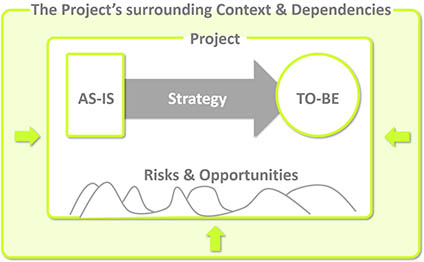The fact that nothing beats a good start, is not a new insight.
Neither is the importance of a good plan.
Executive summary
 You do in fact have some kind of a crystal ball.
You do in fact have some kind of a crystal ball.
A bad start will most likely be followed by a de-railed project (most of the project evaluation report is already written by now). The chances for a successful project on the other hand increases dramatically, when you show the tenacity and discipline, ensuring the Good Start.
This post will discuss what a Good Start is … and why it is not a one-off thing in a project.
The Good Start
The need for a Good Start is universal, being it
- in a strong product environment with stable, highly empowered and cross-functional product team measured on outcome
- in the classic environment with Agile / Waterfall feature-delivery teams being measured on output
- doing business development, production optimization …
For the sake of simplicity, we’ll here call all the different endeavors a “project”.
In the quest for The Good Start, all projects need to understand the TO-BE situation / Vision, the AS-IS situation, its risks and opportunities, and importantly have a guiding strategy for how to reach the TO-BE situation, minimizing risks and optimizing opportunities. All this in the respect of the project’s surroundings and dependencies.
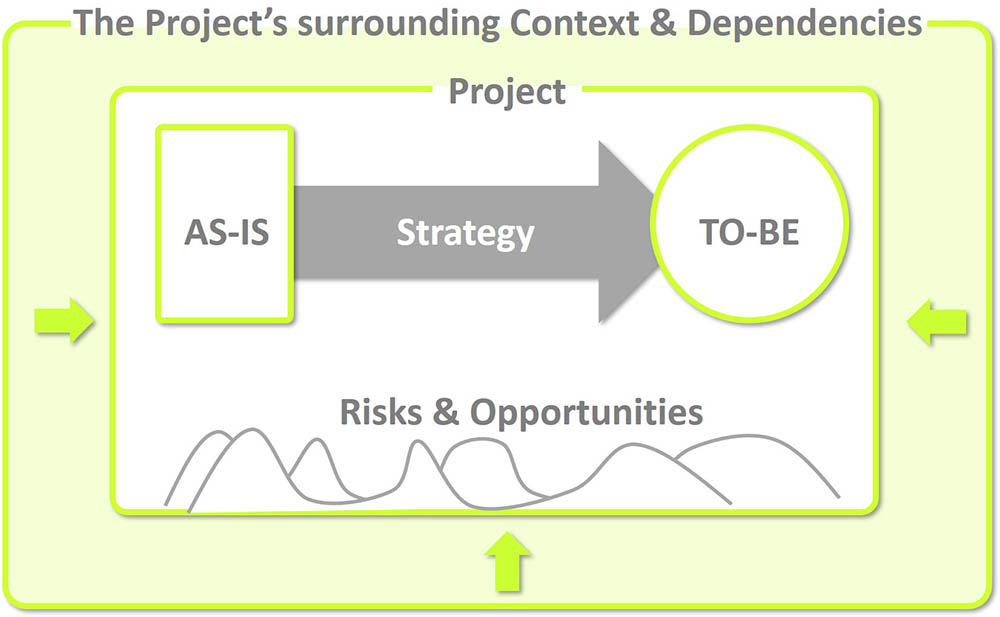
A project will always exist within some context and be subject to a number of dependencies:
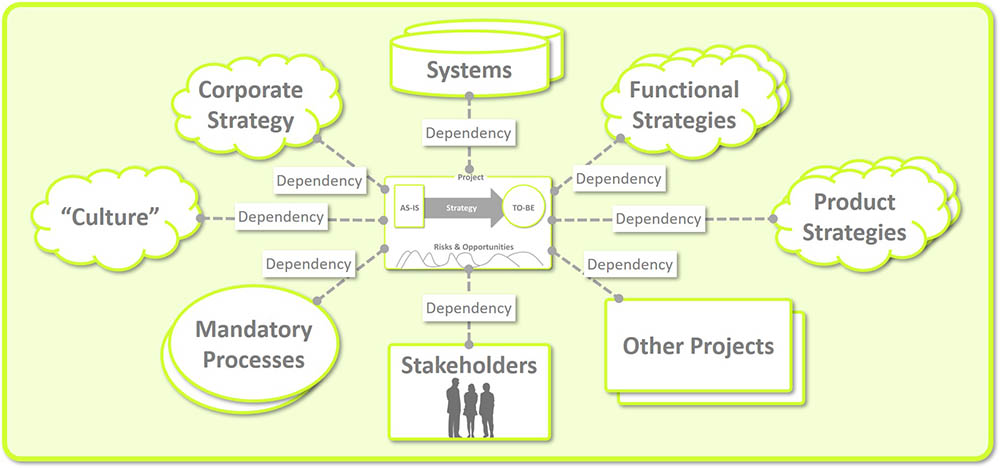
For some projects (typically the classic “Waterfall project”) the Good Start includes a detailed Requirement Specification and a detailed Business Case with full financial buy-in.
Other projects with a more iterative nature are often seen driven by continuous discovery and metered funding.
No matter the type of project, we need a Good Start.
Tenacity and discipline needed
This is where you’ll find the seeds for future problems. We’re feeling a constant pressure to get moving, not maintaining the tenacity needed for a good start.
Focus on two things, and it’ll act as a locomotive for you:
-
Do the right things
-
Have a strong strategy
Do the right things
The Agile movement has been a strong proponent for Efficiency with its focus on maximized output, supported by burn-down charts, measurement of velocity etc. This Efficiency mindset is enforced by an army of Agile (delivery) “coaches”. You might want to visit the earlier post Product Discovery, elaborating on the deficiencies seen among Agile “delivery coaches”.
What is far more important than being Efficient, is being Effective, making sure that we’re doing the right things. Yes – it should be a no-brainer, but be vigilant here. Ask – “what is the validity of the input to the project?“, “how do we know that this is in fact addresses our (real) customer’s needs, pains and/or gains?”

What is the point being highly Efficient, if what we’re doing is not providing value to our customers?
Have a strong strategy
Your approach strategy binds it all together, requiring you to understand the context / dependencies, TO-BE situation, the AS-IS situation, and the risks and opportunities.
Think of your strategy as the overall plan for how to maneuver your project towards the TO-BE situation / Vision, minimizing risks and optimizing outcome.
Don't stop
Whatever type of project you’re running, don’t stop getting the Good Start. Make it a continuous habit throughout the project. Why? Because your context and dependencies are not (normally) static.
This habit comes in many wrappings, like …
The Double Diamond Model
The rationale here is to have sharp awareness of when being in problem-space and when being in solution-space.
Note the green arrows enforcing the iterative nature of focus-shifting.
Understand the problem, before trying so solve it.
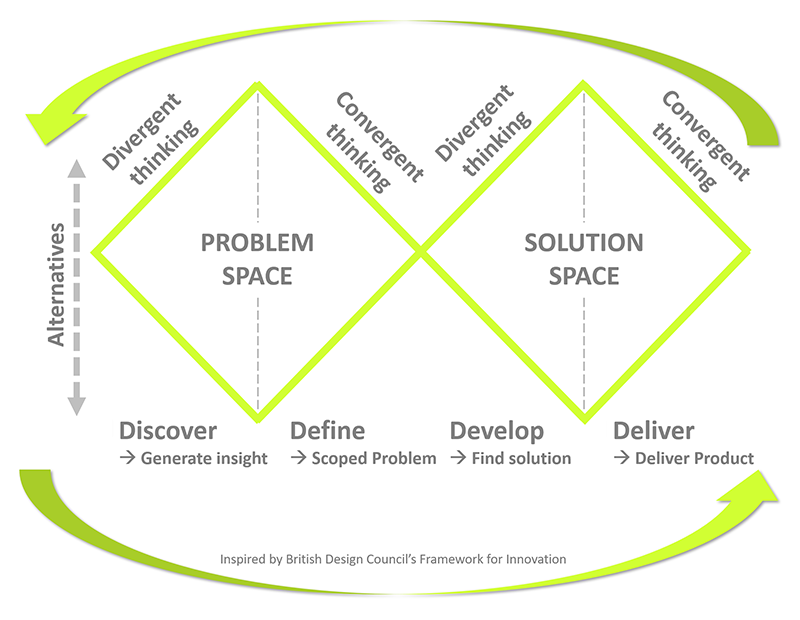
Dual-track agile
Dual-track agile is a variant of the double-diamond model with a clear distinction between Product Discovery (making sure that we’re working on the right stuff) and Product Development (developing the solution in the best and most efficient way).
The same point as above: make sure to have a validated understanding of the problem, before trying to solve it.

Continuous Discovery
Teresa Torres has written the important book Continuous Discovery Habits. Note that Teresa uses the term “customer opportunity” collectively to capture customer’s needs, pains and desires.
The graphics to the right is inspired by Teresa’s Opportunity Solution Tree.
Teressa helps us understand the importance of
- Starting with the end (understand the expected outcome)
- Assumption Tests (do not implement a solution, unless it has been validated)
- Iterating between Problem- and Solution-space
Same story: make sure to work on validated assumptions.
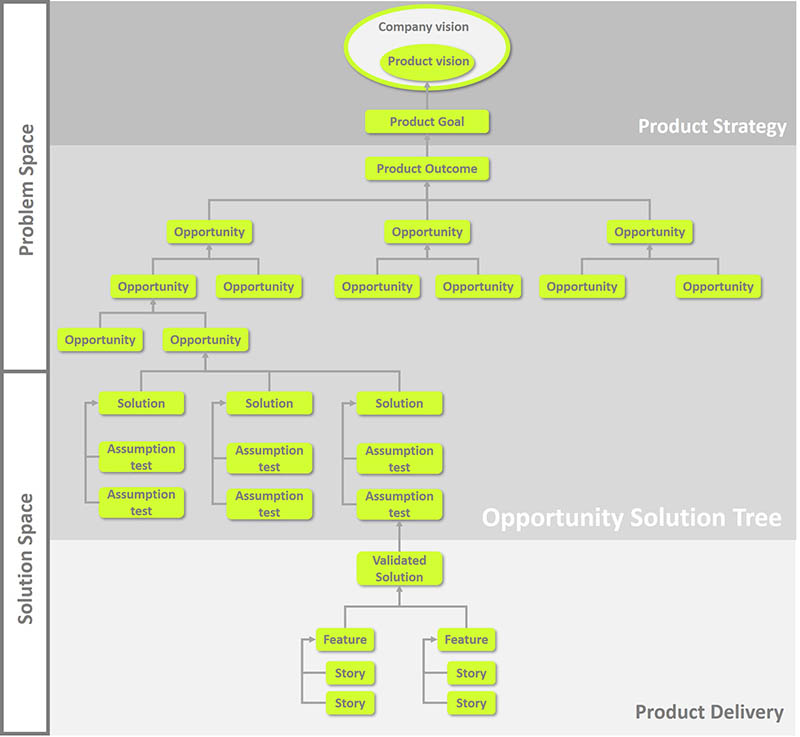
Starting with outcomes, rather than outputs, is what lays the foundation for product success
Teresa Torres
Wrap-up
Having the tenacity and discipline for the Good Start is not about being bureaucratic or being religious about some framework.
It is about pure common sense and business rationale.

